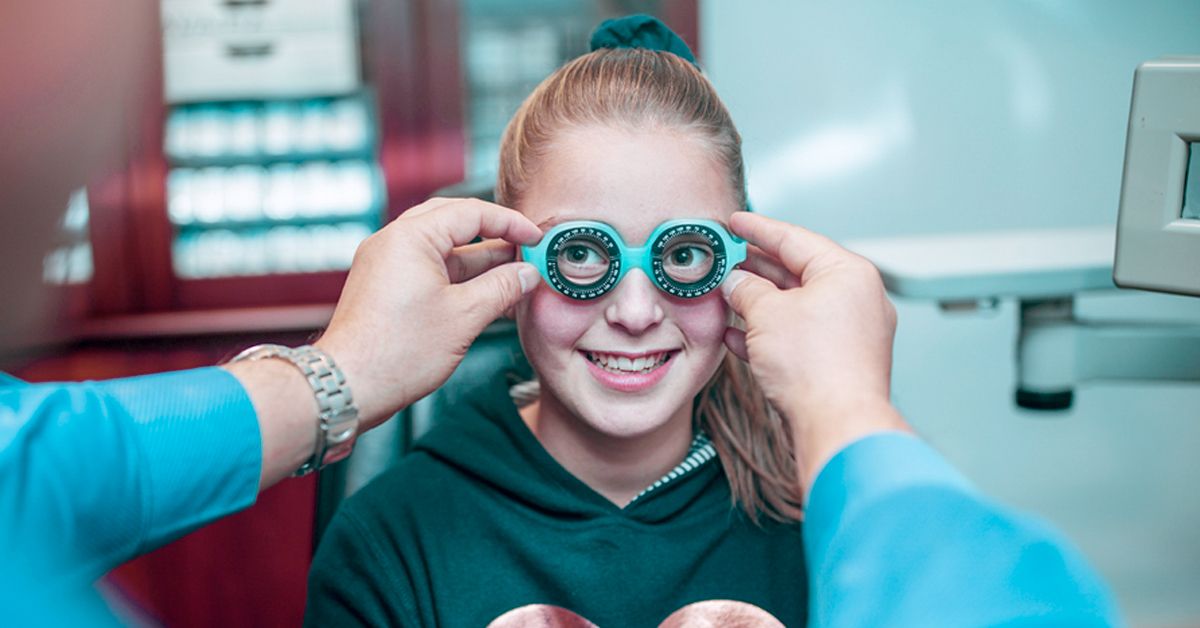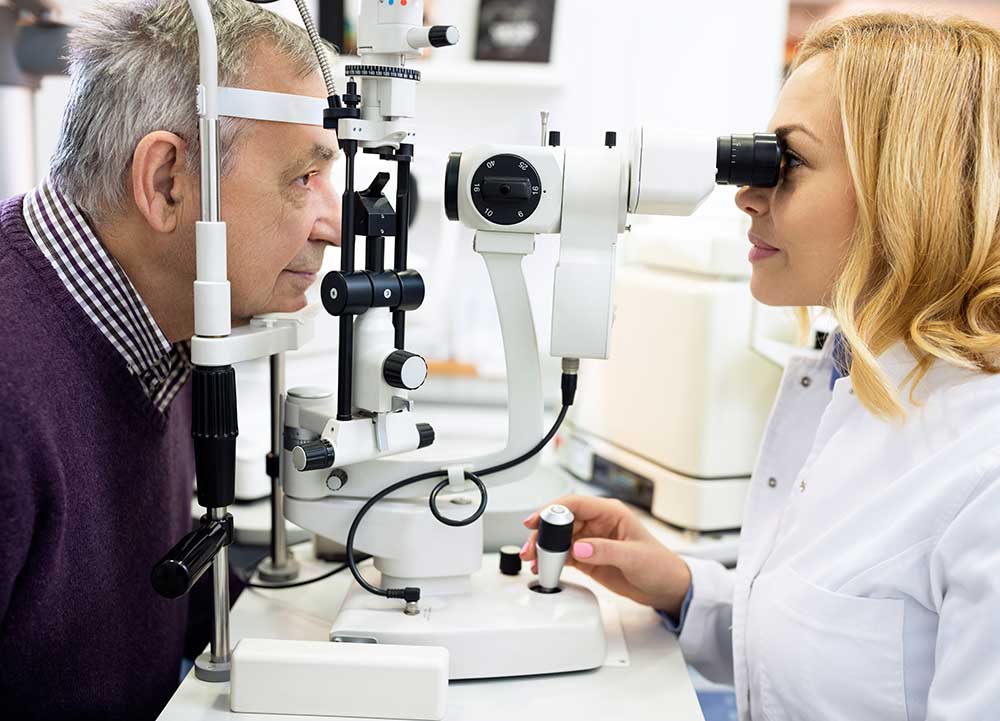Recognizing the Duty of Your Eye Doctor in Preserving Vision
Recognizing the Duty of Your Eye Doctor in Preserving Vision
Blog Article
Discovering the Most Current Technical Innovations in Optometry and What They Mean for Eye Doctors
From the precision of Optical Comprehensibility Tomography to the nuanced insights provided by AI-driven analysis tools, these technologies are establishing new requirements in client assessment and therapy. As these innovations penetrate the practice, eye doctors are faced with the obstacle of welcoming these devices to enhance patient outcomes.
Advancements in Diagnostic Devices
Progressing the area of optometry, innovations in diagnostic devices have actually reinvented the way eye treatment professionals analyze and detect ocular conditions and aesthetic disabilities. The past decade has actually experienced substantial technological innovations, making it possible for more thorough and exact evaluations.
One more key innovation is the introduction of innovative corneal topography systems, which map the surface area curvature of the cornea with precision. These tools are particularly advantageous for fitting get in touch with lenses and diagnosing corneal disorders. Digital retinal imaging has actually changed traditional ophthalmoscopy, supplying thorough, panoramic sights of the retina that facilitate complete visual evaluations.
The growth of wavefront aberrometry has actually also been critical, allowing the evaluation of refractive errors with unmatched accuracy (Opticore Optometry). This technology helps in tailoring rehabilitative lenses and enhancing medical results for refractive surgeries. Collectively, these analysis advancements empower eye doctors to deliver remarkable person treatment, ensuring early intervention and tailored treatment approaches, eventually improving visual wellness end results
AI in Person Management
Building on the structure of cutting-edge analysis devices, the unification of synthetic knowledge (AI) in client management stands for a transformative leap for optometry. AI systems are progressively utilized to enhance performance, precision, and customization in person care. By analyzing large amounts of information, AI can determine patterns and predict possible eye conditions, enabling eye doctors to tailor interventions extra properly. This capacity is vital in managing chronic eye conditions such as glaucoma and diabetic person retinopathy, where early discovery and continuous surveillance are key.
In addition, AI-driven systems facilitate structured individual communications and management procedures. Automated scheduling, virtual consultations, and customized follow-up strategies not only enhance patient complete satisfaction however likewise optimize time administration for practitioners. These systems can triage people based upon the seriousness of their conditions, ensuring that those in crucial requirement obtain prompt focus.
Furthermore, AI boosts decision-making by supplying eye doctors with evidence-based referrals and therapy pathways. By incorporating information from digital wellness documents, AI devices provide understandings that inform professional choices, minimizing the risk of mistakes and improving person outcomes. As AI proceeds to evolve, its role in person monitoring will likely increase, reshaping the landscape of optometric care.
Advances in Retinal Imaging
In the world of optometry, retinal imaging has experienced remarkable technical improvements that are enhancing diagnostic abilities and individual care. Technologies such as Optical Coherence Tomography (OCT) and fundus photography have changed exactly how optometrists evaluate the retina and picture. OCT, particularly, provides high-resolution, cross-sectional pictures of the retina, allowing for the thorough examination of its layers. This capability is invaluable for early discovery and administration of conditions like glaucoma, diabetic retinopathy, and age-related macular deterioration.
Boosted imaging techniques like OCT angiography are additional refining diagnostic precision. This non-invasive technique maps blood flow in the retina, look at these guys supplying vital insights right into vascular health without the requirement for dye injections. Furthermore, adaptive optics modern technology is being integrated right into retinal imaging systems to fix ocular aberrations, delivering extraordinary image quality. Such developments assist in the recognition of minute retinal modifications that could signify condition progression.
Moreover, advancements in expert system are increasing retinal imaging by allowing computerized analysis of large datasets. These systems aid eye doctors in identifying patterns a measure of pathology, thereby improving analysis accuracy and efficiency. Jointly, these advancements are changing retinal imaging into a cornerstone of modern-day eye treatment, improving end results and broadening therapeutic possibilities.
Teleoptometry's Growing Function
Teleoptometry is progressively becoming an essential component of eye treatment, driven by advancements in electronic communication and diagnostic devices. This is specifically helpful in underserved and country locations where accessibility to specialized eye treatment is usually minimal.
The assimilation of man-made intelligence (AI) additional boosts teleoptometry, allowing the evaluation of visual information and aiding in the detection of eye conditions such as glaucoma and diabetic retinopathy. AI-powered formulas can swiftly translate complicated imaging information, giving eye doctors with useful understandings that strengthen professional decision-making.
Moreover, teleoptometry supports connection of care with smooth combination with electronic health records (EHRs), allowing optometrists to maintain detailed individual histories. When consulting with different practitioners., this makes sure that individuals obtain regular and individualized care also.
In spite of these benefits, look at this web-site obstacles stay, including making sure data safety and security and taking care of patient assumptions. However, teleoptometry stands for a considerable stride towards more easily accessible, reliable, and patient-centered eye treatment. As modern technology progresses, its duty is poised to expand further.

Future Patterns in Eye Care
A myriad of ingenious trends is readied to reshape the future of eye treatment, driven by technical developments and the progressing needs of clients. One considerable pattern is the integration of man-made knowledge (AI) in diagnostics, which guarantees to enhance the accuracy and effectiveness of eye evaluations. AI algorithms can assess vast amounts of information from retinal images, potentially finding conditions like diabetic retinopathy and glaucoma earlier than standard approaches.
Moreover, personalized medicine is obtaining traction in optometry, with hereditary screening notifying tailored therapy strategies. This strategy aims to optimize person results find out this here by customizing treatments to individual hereditary accounts. Wearable technology, such as smart call lenses, is likewise imminent, providing real-time tracking of intraocular stress or glucose degrees, hence providing continual insights into systemic and ocular health.
The fostering of augmented truth (AR) and online reality (VR) in training and client education and learning is one more emerging pattern. These modern technologies supply immersive experiences that can improve understanding and abilities both for eye doctors and people. As these fads advance, optometrists need to stay abreast of technological developments to give innovative care, guaranteeing better person outcomes and fulfillment in the vibrant landscape of eye treatment.
Conclusion

Jointly, these diagnostic improvements empower optometrists to supply premium patient treatment, ensuring early intervention and customized therapy approaches, eventually boosting visual wellness results.

As these innovations continue to progress, eye doctors should adjust and integrate them into method, ultimately enhancing operations efficiency and raising the requirement of eye care delivered to patients.
Report this page